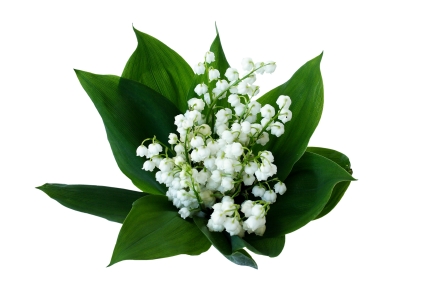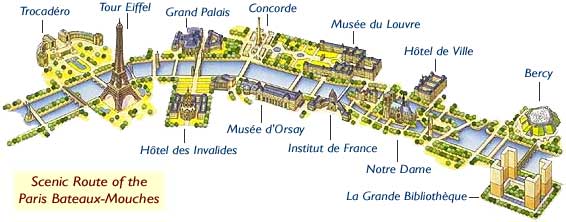วันจันทร์ที่ 29 ตุลาคม พ.ศ. 2555
วันอาทิตย์ที่ 21 ตุลาคม พ.ศ. 2555
Le Hameau - Château de Versailles

หมู่บ้านจำลองที่ภาษาฝรั่งเศสเรียกว่า Hameau de la Reine แปลเป็นอังกฤษว่า The Queen's hamlet ดูจากระยะไกลงดงามราวภาพฝัน
หมู่บ้านจำลองนี้พระนางมารีอังตัวเนตได้ทอดพระเนตรถึงความเป็นอยู่ของชาวบ้าน มีฟาร์มจำลอง ซึ่งพระนางจะแต่งชุดชาวบ้านมาลองรีดนมวัว ส่วนตัวบ้านหลังน้อย ถึงจะเล็กและไม่หรูหราเท่าพระราชวังแต่ก็เต็มไปด้วยสิ่งอำนวยความสะดวกพรรคพร้อม มีไว้ให้พระนางมาเล่นและ พักผ่อนหย่อนใจ

ส่วนที่ควรติดใจที่สุดในการมาเที่ยวแวร์ซาย ไม่ใช่ความหรูหราของพระราชวัง แต่กลับเป็นความเรียบง่ายและน่ารักของหมู่บ้านจำลองนี้แทน

Le Hameau
LA VIE RURALE
Marie-Antoinette, cherchant à fuir la Cour de Versailles, commande en 1783, son Hameau. Elle y retrouve régulièrement les charmes de la vie paysanne, entourée de ses dames de compagnies. L’ensemble devient d’ailleurs une véritable exploitation agricole, dirigée par un fermier, dont les produits alimentaient les cuisines du Château. Sous le Premier Empire, le Hameau est remeublé avec délicatesse pour l’Impératrice Marie-Louise.
A peine le premier jardin aménagé aux abords du Petit Trianon fut-il terminé que Marie-Antoinette songea à en établir un second, dans son prolongement vers la porte Saint-Antoine. Sur ce nouveau territoire, la Reine développa un aspect déjà antérieurement ébauché par Louis XV à la Ménagerie de Trianon : le goût rustique. Entre 1783 et 1787, le Hameau fut donc réalisé dans l’esprit d’un véritable village normand, avec un ensemble de onze maisons réparties autour du Grand Lac. Cinq d’entre elles étaient réservées à l’usage de la Reine et de ses invités : la Maison de la Reine, le Billard, le Boudoir, le Moulin et la Laiterie de Propreté. Tandis que quatre maisons étaient réservées à l’occupation paysanne : la Ferme et ses annexes, la Grange, le Colombier et la Laiterie de Préparation. La Ferme était située à l’écart du village et abritait un cheptel varié : petit troupeau de huit vaches et d’un taureau, dix chèvres et des pigeons. Une maison était réservée à l’usage domestique : le Réchauffoir, où étaient préparés les plats pour les dîners donnés à la Maison de la Reine ou au Moulin.
Chaque maison avait son petit jardin, planté de choux pommés de Milan, de choux-fleurs et d’artichauts, entouré d’une haie de charmille et clos d’un palis de châtaignier. Les rampes des escaliers, galeries et balcons étaient garnies de pots en faïence de Saint-Clément, aux couleurs blanche et bleue, contenant jacinthes, quarantaines, giroflées ou géraniums. De petits vergers étaient plantés de pommiers et cerisiers. Sur les murs des maisons et les berceaux ombrageant certaines allées, couraient des plantes grimpantes. Une escarpolette fut aménagée en 1785 pour les enfants royaux, puis rapidement démontée. En 1788, un jeu de boules fut également aménagé. La Tour de Malborough, sorte de phare dominant les bords du Grand Lac, était utilisée pour le départ des promenades en barque ou des parties de pêche.
วันศุกร์ที่ 19 ตุลาคม พ.ศ. 2555
Starbucks
The logo above is one that I think pretty much anyone in America could plainly recognize, and before too long, most people in the world will be able to do the same. Starbucks and it's trademark green and brown mermaid logo has become synonymous, not just for great coffee, but for this elitist beverage experience one gets when having their Starbucks. Starbucks Coffee originated in Seattle WA in the early 80's. It's first store was in the Pike Place Market which is primarily a fishing town, thus the logo was based around this mermaid siren. The meaning behind the Starbucks mermaid was that Starbucks coffee was intended to be as seductive as this siren. The logo has changed twice over the course of the company thus far and has become more modern looking and a little more politically correct. The original logo had a bare chested mermaid. Although Starbucks started in a cool fishing town in the hub of the Seattle area, the brand has now evolved to this American standard of identity. I would think that people from other countries who have had any sort of exposure to our western culture would assume that "all American's drink Starbucks." That is not the case, but the coffee has somewhat shaped this ideology of an American lifestyle complete with your laptop snuggled up in a comfy chair and a hot latte at your local Starbucks.
Starbucks Coffee has become the America's Coffee. And with their global expansion moving as quickly as it has been, Starbucks is on it's way to becoming the next McDonalds. In the business sense: McDonalds sells nasty food and Starbucks coffee is pretty amazing!Over the last decade, Starbucks has grown exponentially. Their stores are popping up all over the US, with stores on both ends of city blocks in certain larger cities. But not only has their growth been so rapid in our country, but their global expansion is growing in leaps and bounds as well. As you can see by this ingenious diagram below, Starbucks is now in dozens of countries across the world.
But not only are they uniting very different people and cultures by exceptional coffee, but with this expansion, Starbucks Corporate is able to use resources from all around the world to make a single cup of coffee. The ridiculous $5 we pay for a latte is filtered through the organization and a cut of it is paying some of the poorest countries to harvest the coffee beans, or to pick and clean the cane sugar, or to feed and milk the cows that they use in their drinks. The Starbucks company, although they are making absurd amounts of money, are still making an effort to find the finest resources while employing workers in poverty-strucken countries.
And as you can see by the diagram, the US naturally has the most Starbucks stores in the world, but it is unusual and amazing at the same time to see some the the Starbucks locations in other countries.
Here are just a few:
RUSSIA
China
Korea
Dubai
Paris
Even in the Louvre!
And here is a Map of Downtown NYC. Every single red dot is a Starbucks (not just the larger Letters)
CRAZY!
They are EVERYWHERE!
วันพฤหัสบดีที่ 4 ตุลาคม พ.ศ. 2555
Muguets

but also called "La Fête du Muguet" (Lily of the Valley Day).
This French tradition begun on May 1st, 1561, when King Charles IX received a bunch of lily of the valley flowers as a taken of luck and prosperity for the upcoming year. The following years, he began the custom
of presenting lily of the valley flowers to the ladies of his court each year on May 1st.
As most people know, the French take workers rights very seriously (hence the strikes you hear about from time to time). Because of that, La Fête du Travail is a public holiday that is observed almost as strictly as Christmas. You can see the unions march in a lively parade around the Bastille to campaign for and to celebrate workers rights. In honor of this, most places will be closed, but you will still find a few brasseries or bars open. The best thing to do is to just wander the city and take in the sights (maybe go see the parade at Bastille, then wander up towards the canal for a picnic!).
It is also a day to celebrate the arrival of spring. As you walk around Paris, you'll see little sidewalk stalls popping up everywhere selling lilies-of-the-valley (or muguets), since May 1 is the only time of the year when people can sell flowers on the street without having to buy a permit. The tradition of giving lilies-of-the-valley started with King Charles IX when he was presented with the flowers on May 1, 1561. Apparently, he liked the flowers so much that he decided to give them to all the ladies of his court on the same day each year. Then, around 1900, French men started giving bouquets of muguet to women to express their affection. Today, the flowers are given as a token of appreciation to close friends and family members.
So take a stroll, buy a bouquet of muguet, and enjoy all the sights, sounds, and smells Paris has to offer!

สมัครสมาชิก:
บทความ (Atom)












